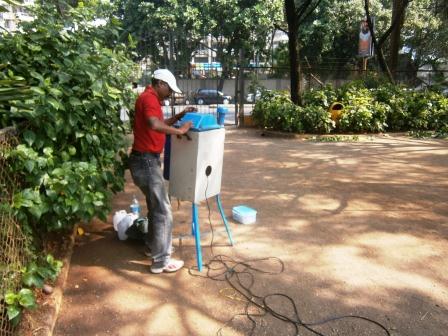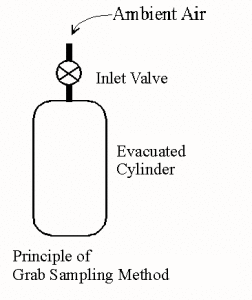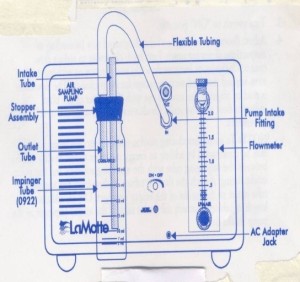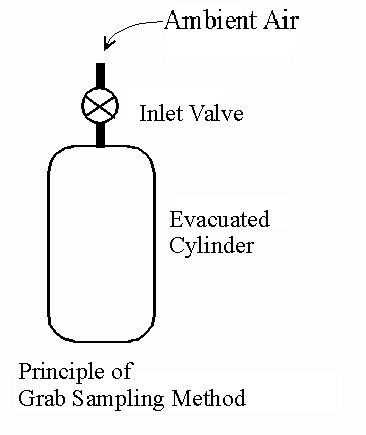Ambient Air Sampling Methods
Pollutants are nothing but any substance that may present in an atmosphere in such a concentration that it may harmful to surrounding, living organism or human being. Sampling and analysis of air pollutants is known as Air quality monitoring and it is major part of environmental monitoring. There are many advanced types of ambient air Sampling methods. we will learn here only which are most commonly used.
What is Ambient Air Sampling
Ambient air sampling refers to the process of collecting air samples from the surrounding environment to assess the quality and composition of the air. It involves strategically placing air sampling devices or instruments at specific locations to capture representative samples of the outdoor air.
These samples are then analyzed to measure the concentration of pollutants, such as particulate matter, gases, volatile organic compounds, and other contaminants present in the ambient air. Ambient air sampling provides valuable data for assessing air quality, identifying pollution sources, evaluating compliance with air quality standards, and monitoring the effectiveness of pollution control measures.
It plays a crucial role in understanding the impact of air pollution on human health, the environment, and supporting evidence-based decision-making for air quality management and regulatory actions.
Data obtained by is used to take some action to reduce pollutant concentration to acceptable limits by Environmental Consultants.

So the most important objective of any air sampling exercise is to obtain a genuine & representative sample. There are both gaseous & particulate pollutants whose concentration is find out in milligram per cubic meter of air.
Particulate sampling is done with help of high volume air sampler, Dust sampler. In these samplers, particles less than 10 micron are taken into consideration. Filter paper being used in that sampler. THis is also known as filtration method of air sampling.
Difference between weights of filter papers divided by quantity of air passed gives you particulate matter present in air.
Read More About How to reduce Particulate Matter?
For the Gaseous sampling, collection of pollutant gas is very important and it can be collected by below shown types of ambient air sampling methods.
Ambient Air Sampling Methods
There are many methods available for collection of Air pollutants from atmospheric Air i.e. Grab Sampling, absorption in liquids, adsorption on solids materials & Freeze-out sampling in process of Environmental Monitoring.
Grab Sampling
In grab sampling, air sample is collected by filling an evacuated flask. This is very old and traditional Ambient Air Sampling Method. Plastic bags have been used for grab sampling for storage of gas & then subjected to analysis of grabbed sample.

Grab sample may be taken using rigid wall containers made from glass or stainless steel. These containers first evacuated & then allow air to enter to fill the container. Alternatively, a container may be filled with water & then used as a collector simply by draining water which is replaced by filling air sample.
Absorption in Liquids
Absorption of gaseous pollutants in liquid medium is one of the most common method for collecting air samples. To bring out high degree (pollutant) gas-liquid contact, impingers & midget type’s devices are used. These devices can handle sample flow rates about 30 to 3 litres per minutes respectively. Particular absorbent-liquid (say 0.1 N NaOH) is filled inside Impinger. Flow is controlled with help of flow control devices. If done with sampling procedure, particular absorbent is then desorbed into lab for analysis & then concentration of (say, NOx) required gas is find out.

Majority of Environmental Consultancy firms prefer this absorption in liquids among ambient air sampling Methods because of there is very negligible loss of degree of quality as well as quantity of pollutants while carrying it to laboratory.
Adsorption on Solids
In this Ambient Air Sampling Method pollutant gas is absorbed on surface of solid. The air sample is passed though packed column containing finely divided adsorbent on whose surface pollutants are retained. Commonly used adsorbent is activated charcoal & silica gel. After sampling, sample gases are desorbed into lab for analysis. This may be accomplished by washing adsorbent with liquid solvent.
Freeze-out sampling
Freeze-out sampling contains series of cold traps which being used to condensate air pollutants from air. The traps are bought into laboratory, samples are removed, & analysis be means of mass spectrophotometry, Gas Chromatography, Spectrophotometry etc.
Sedimentation Method of Air Sampling
The sedimentation method of air sampling involves the collection of airborne particles by allowing them to settle onto a collection surface under the influence of gravity. In this method, a settling chamber or a settling plate is placed in an area where air is being sampled.
The particles in the air gradually settle onto the collection surface due to their size and weight, allowing for subsequent analysis and assessment of particulate matter present in the air. This method is commonly used for larger and heavier particles and is particularly effective for indoor air quality assessment.
Impingement Method of Air Sampling
The impingement method of air sampling is a technique used to capture microorganisms and particles from the air by directing the air through a liquid medium. In this method, air is drawn into a collection device, such as an impinger, where the air passes through the liquid.
Microorganisms and particles in the air become entrapped in the liquid, which can later be analyzed to determine the microbial content or particle concentration.
Impingement is often used in microbiological air sampling to assess indoor air quality and detect potential pathogens in healthcare settings, laboratories, and other controlled environments.
Air Sampling Methods in Microbiology
In microbiology, air sampling methods are used to assess the presence of microorganisms in the air and evaluate indoor air quality. Some common air sampling methods in microbiology include:
- Impaction Method: This method involves drawing a known volume of air through a collection device, such as an agar plate or a filter. Microorganisms present in the air impact onto the collection surface, where they can grow as colonies on the agar or be quantified through subsequent analysis.
- Impingement Method: In this method, air is drawn through a liquid medium, usually sterile broth, in an impinger device. Microorganisms in the air become entrapped in the liquid, allowing subsequent analysis of the microbial content in the collected liquid.
- Surface Sampling: While not a traditional air sampling method, surface sampling involves swabbing or wiping surfaces to collect settled particles and microorganisms. This method is particularly useful for assessing potential sources of indoor air contamination.
- Filter Method: Air is drawn through a filter, often made of glass fiber or membrane, capturing airborne particles and microorganisms on the filter surface. The filter can then be analyzed to quantify microbial content or identify specific microorganisms.
- Bioaerosol Samplers: These specialized devices are designed to collect airborne particles and microorganisms onto a collection medium. They are commonly used in outdoor and industrial settings.
Microbiological air sampling helps identify potential sources of contamination, monitor cleanrooms, healthcare facilities, and laboratories, and assess the risk of airborne pathogens in various environments. The choice of method depends on the specific objectives of the study, the types of microorganisms being targeted, and the characteristics of the sampling area.
Selection of Air Sampling Location
The selection of air sampling locations is a critical aspect of effective air quality assessment. It requires a comprehensive understanding of the environment being monitored and the potential sources of pollutants.
Sampling points should be strategically chosen to capture representative air quality data, taking into account factors such as proximity to emission sources, prevailing wind directions, and human activity. High-risk areas, such as industrial zones, traffic intersections, and indoor spaces with poor ventilation, should be prioritized to ensure a comprehensive evaluation of air quality and potential health risks.
Let us know your views on this post.
Know More about Environmental Monitoring
Learn more about Environmental monitoring Methods
Also read
Ambient air sampling collects air samples from the surrounding environment to assess overall air quality, while stack sampling collects air samples from specific emission sources such as industrial stacks to measure pollutant concentrations and compliance with regulations.
Two common types of air sampling are passive sampling and active sampling.
Air sampling is typically conducted using air sampling pumps, which draw air through filters or collection media to capture airborne particles and contaminants. These collected samples can then be analyzed in laboratories to assess air quality, identify pollutants, and determine potential health risks.
There are several types of air sampling methods used to assess air quality and detect pollutants. These include grab sampling, where air is collected at a specific moment; passive sampling, which uses devices like diffusion tubes to capture pollutants over time; and active sampling, involving the use of pumps to actively draw air through filters or sorbent media. Each method has its advantages and limitations, and the choice depends on the specific pollutants being targeted and the monitoring objectives.
Air sampling is collected using various methods. For grab sampling, an air sample is quickly collected at a specific location and time using a handheld device. Passive sampling involves leaving devices like diffusion tubes in the sampling area to accumulate pollutants over a certain period. Active sampling employs pumps to actively draw air through filters or sorbent media, allowing for precise control over the sampling rate and volume.
Air sampling for microbiology typically employs two main methods: impaction and impingement. Impaction involves drawing air through a sampler where particles impact onto an agar plate, allowing microbial colonies to grow. Impingement uses a liquid medium to capture microorganisms from the air, with the collected liquid subsequently analyzed for microbial content. These methods help assess indoor air quality, identify potential pathogens, and monitor microbial contamination in various settings.

